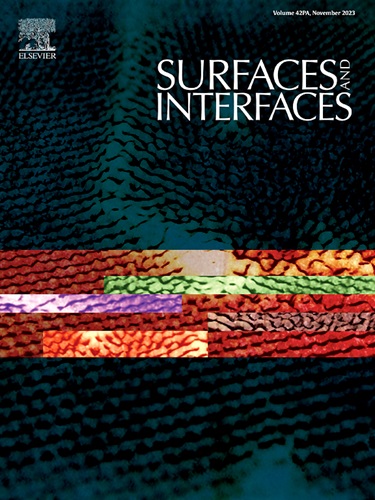Comprehensive review on advanced coordination chemistry and nanocomposite strategies for wastewater microplastic remediation via adsorption and photocatalysis
IF 5.7
2区 材料科学
Q2 CHEMISTRY, PHYSICAL
引用次数: 0
Abstract
The persistence of microplastics (MPs) in wastewater has posed alarming and growing environmental, ecological, and health challenges. This review focuses on the decontamination of MPs from wastewater via adsorption and photocatalytic degradation processes using nanocomposites (NCs), which are advantageous due to their large specific surface area, scalable chemical functionality, and ability to form ligands with MPs, thereby promoting the selectivity and sensitivity of treatment processes. The adsorption mechanism relies on the interaction between MP molecules and NCs' polar, organic, ionic, metallic, and hydrophobic surface ligands via hydrogen, electrostatic, van der Waals, or π-π bonds. Photocatalytic degradation involves the MPs' molecular decomposition, generating environmentally friendly by-products that are far less damaging. Metal ligands in NC-based catalysts effectively enhance the degradation of MPs. In addition, the efficiency, stability, and reusability of NCs were highlighted, while scalability for practical applications was considered. Furthermore, the manuscript addressed the challenges of NC synthesis, environmental safety, compliance with relevant treatment process regulations, and the cost of applying NCs to industrial MP disposal. This paper provides a roadmap for mitigating MP wastewater pollution while promoting sustainability and aquatic ecosystem protection. It presents strategic recommendations for the nanotechnology processes to strengthen the circular economy and preserve natural resources.
先进配位化学和纳米复合材料在废水微塑料吸附和光催化修复中的应用综述
微塑料(MPs)在废水中的持续存在对环境、生态和健康构成了令人担忧且日益严重的挑战。本文综述了纳米复合材料(NCs)通过吸附和光催化降解工艺从废水中去除MPs的方法,纳米复合材料具有较大的比表面积、可扩展的化学功能以及与MPs形成配体的能力,从而提高了处理工艺的选择性和敏感性。吸附机制依赖于MP分子与NCs的极性、有机、离子、金属和疏水表面配体通过氢、静电、范德华或π-π键相互作用。光催化降解涉及MPs的分子分解,产生对环境友好的副产物,其破坏性要小得多。纳米基催化剂中的金属配体能有效地促进MPs的降解。此外,强调了网络控制的效率、稳定性和可重用性,同时考虑了实际应用的可扩展性。此外,本文还讨论了NC合成、环境安全、遵守相关处理工艺法规以及将NC应用于工业MP处置的成本等方面的挑战。本文提供了在促进可持续性和水生生态系统保护的同时减轻MP废水污染的路线图。它提出了纳米技术工艺的战略建议,以加强循环经济和保护自然资源。
本文章由计算机程序翻译,如有差异,请以英文原文为准。
求助全文
约1分钟内获得全文
求助全文
来源期刊

Surfaces and Interfaces
Chemistry-General Chemistry
CiteScore
8.50
自引率
6.50%
发文量
753
审稿时长
35 days
期刊介绍:
The aim of the journal is to provide a respectful outlet for ''sound science'' papers in all research areas on surfaces and interfaces. We define sound science papers as papers that describe new and well-executed research, but that do not necessarily provide brand new insights or are merely a description of research results.
Surfaces and Interfaces publishes research papers in all fields of surface science which may not always find the right home on first submission to our Elsevier sister journals (Applied Surface, Surface and Coatings Technology, Thin Solid Films)
 求助内容:
求助内容: 应助结果提醒方式:
应助结果提醒方式:


